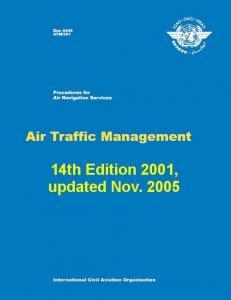This Dallas Fort Worth air traffic controller well deserved her NATCA award two years ago. Had she not responded quickly, the pilot would have passed out on board his Piaggio P180 Avanti (registration N501PM, callsign shortened into N1PM) and could even have passed away. Another pilot was alerted by slurring in the pilot’s speech. Video:
FLIGHT SAFETY
LANGUAGE CRITICAL TO AVIATION SAFETY

Cours d’anglais aéronautique sur FCL ANGLAIS
The 5th ICAO Journal dates back to August 2013, and there is a chapter on Language Proficiency Requirements (LPR) in it. The Journal reviews ICAO’s LPRs and other recent initiatives developed, and reported during a technical seminar to support language proficiency in March 2013, and particularly English language testing among Member States.
All the stakeholders were gathered at the seminar. Those who implement the safety-critical language provisions as mandated by Assembly Resolution A32-16 in 1998, and embodied in Annexes 1, 6, 10 and 11, as well as Doc 4444 — PANS-ATM have their work cut out for them!
According to ICAO Convention, Annex 10, Vol.2, « If a pilot, and an air traffic controller don’t speak a common language, the default language is English. Additionally, the flight crew establishes the language to be used. »
The seminar presented an ICAO speech sample training aid. This tool provides examples of ICAO levels 3, 4 & 5. There was a discrepancy among the various ratings given to samples in a workshop. I know that the juries throughout the world have done some good work. However, candidates have already reported differences between juries within a fortnight. The ratings can vary up to almost two ICAO levels. Rating is difficult, and setting a test is difficult as well.
We know now from the journal that EUROCONTROL is developing a Level 6 examination and that EASA (European Aviation Safety Agency) might establish a validity period of 9 years for Level 6.
Another initiative is the launch of a new AELTS (Aviation English Language Test Service) website at https://www.icao.int/safety/OPS/OPS-Tools/Pages/AELTS.aspx .
The LPR seminar report is available here:
Further information:
FEATURES AND BENEFITS OF ICAO’S AVIATION ENGLISH LANGUAGE TEST SERVICE (AELTS)
Manual on the Implementation of ICAO Language Proficiency Requirements
Latest news: The MCQ (Multiple Choice Questions) on the aeronautical documents test might be given up in 2014. Therefore, the FCL .055 D might be deleted. The FCL .055 tests VFR and IFR only would be left unchanged ie without the 15-minute MCQ test.
Thanks to Thierry Hermas – English teacher at the French Air Force Academy (FAFA) – who passed the documents on.
For Those Who Attended The AERONAUTICAL ENGLISH Class

Cours d’anglais aéronautique sur FCL ANGLAIS
Thank you so much for attending this aviation English class at « Festival des Langues » in Tours today, Sunday, November 24, 2013. Important information: FCL 1.028 and FCL 1.200 have been replaced by FCL .055 and FCL .055 D since April 9, 2013.
Here is the soundtrack we listened to this afternoon. You can download it, then listen directly to 10′ so as to get to the ATIS. Here are the keys (les solutions), see page 4 for the ATIS test, and at the bottom of page 21 for the keys.
Here is a document from the FAA (U.S. Federal Aviation Administration) website that could help you about aircraft vocabulary (click on the picture below):
 As I have told you, for properly transmitting voice communications, you need read ICAO – DOC 4444 ATM/PANS (Air Traffic Management, updated March, 2010) which costs up to $295.00 here (click on the link below):
As I have told you, for properly transmitting voice communications, you need read ICAO – DOC 4444 ATM/PANS (Air Traffic Management, updated March, 2010) which costs up to $295.00 here (click on the link below):
However, you can read a previous edition of DOC 4444 (14th Edition, updated on November 24, 2005 for instance) if you type « doc 4444 – air traffic management fourteenth edition » like here below (click on the picture):
It isn’t worth reading everything as just for radiotelephony purpose, just skip to chapter 12 – page 161 until page 196.
Two other documents are important for aviation voice communications, and air traffic control:
- ICAO Convention – Chapter 5 of Annex 10, Vol.II
- DOC 9432 – Manual of Radiotelephony
Remember:
SARPs = Standard And Recommended Practices
PANS = Procedures for Air Navigation Services
Thank you for your attention, and have a nice week 🙂
For Those Who Attended The AERONAUTICAL ENGLISH Class

Cours d’anglais aéronautique sur FCL ANGLAIS
First of all, thank you so much for attending this aviation English class at « Festival des Langues » in Tours today, Saturday, November 24, 2012. Important information: FCL 1.028 and FCL 1.200 will be replaced by FCL .055 and FCL .055 D from April 9, 2013.
Here is the soundtrack we listened to this afternoon. You can download it, then listen directly to 10′ so as to get to the ATIS. Here are the keys (les solutions), see page 4 for the ATIS test, and at the bottom of page 21 for the keys.
Here is a document from the FAA (U.S. Federal Aviation Administration) website that could help you about aircraft vocabulary (click on the picture below):
FAA AIRCRAFT PARTSAs I have told you, for properly transmitting voice communications, you need read ICAO – DOC 4444 ATM (Air Traffic Management, updated March, 2010) which costs up to $295.00 here (click on the link below):
However, you can read a previous edition of DOC 4444 (14th Edition, updated on November 24, 2005 for instance) if you type « doc 4444 – air traffic management fourteenth edition » like here below (click on the picture):

It isn’t worth reading everything as just for radiotelephony purpose, just skip to chapter 12 – page 161 until page 196.
Two other documents are important for aviation voice communications, and air traffic control:
- ICAO Convention – Chapter 5 of Annex 10, Vol.II
- DOC 9432 – Manual of Radiotelephony
Thank you for your attention, and have a nice weekend 🙂
Mach-3 SR-71 Blackbird’s HOT COCKPIT

As you may have heard, the mythical Lockheed SR-71 Blackbird was a strategic reconnaissance aircraft able to fly at more than Mach 3 – Mach 3.3 ie around 3,500 km/h; or 1,900 kts; and at a maximum flight level of… FL 850 or 26 kilometers high!
The Blackbird indeed had a unique flight envelope with a particular doghouse plot (since she could not exceed 3.5 G), and an exceptionnal coffin corner limited by her CIT – Compressor Inlet Temperature of 427°C maximum.
This aircraft was also unique for her engines were two J58 ramjets fuelled by JP-7 especially refined for extreme flying purpose. This special fuel could drip and leak abundantly as the airframe made up of titanium was retracted while taxiing, and became airtight only when it got its operating shape while flying very fast and very high because of the air density, and surrounding pressure plus the heating caused by the air friction at such speeds. In short, the whole structure considerably expanded when airborne.
The irony – I heard it on the grapevine, or read it somewhere on the web – that titanium which turned into dark blue while flying (SR-71s probably deserved those unofficial other nicknames « Bluebird », or « Habu » viper) was « imported » from… USSR!
Pilots must have taken significant risks inherent in flying such an aircraft as mentioned in this previous post. These pilots used to fly over the USSR to take strategic reconnaissance photographs during the Cold war. They wore pressurized spacesuits so that their blood could not boil in case of decompression or ejection at such altitudes.
The Blackbird travelled faster than a rifle bullet, and the air friction could have melt aluminum-skinned aircraft. At Mach 3.2, fuel cycled behind the chine surface in order to cool the aircraft! The inner windshield temperature could reach 120°C even though a heavy-duty cooling system was on a full function. On landing, the outside temperature of the canopy could reach 300°C, and it must have been far beyond on the fuselage, and wing surfaces while flying at high speeds. The pilot could feel the heat behind his protective gloves!
Special thanks to Xavier Cotton for the Blackbird photos. Please, visit his website on http://www.passionpourlaviation.fr/




